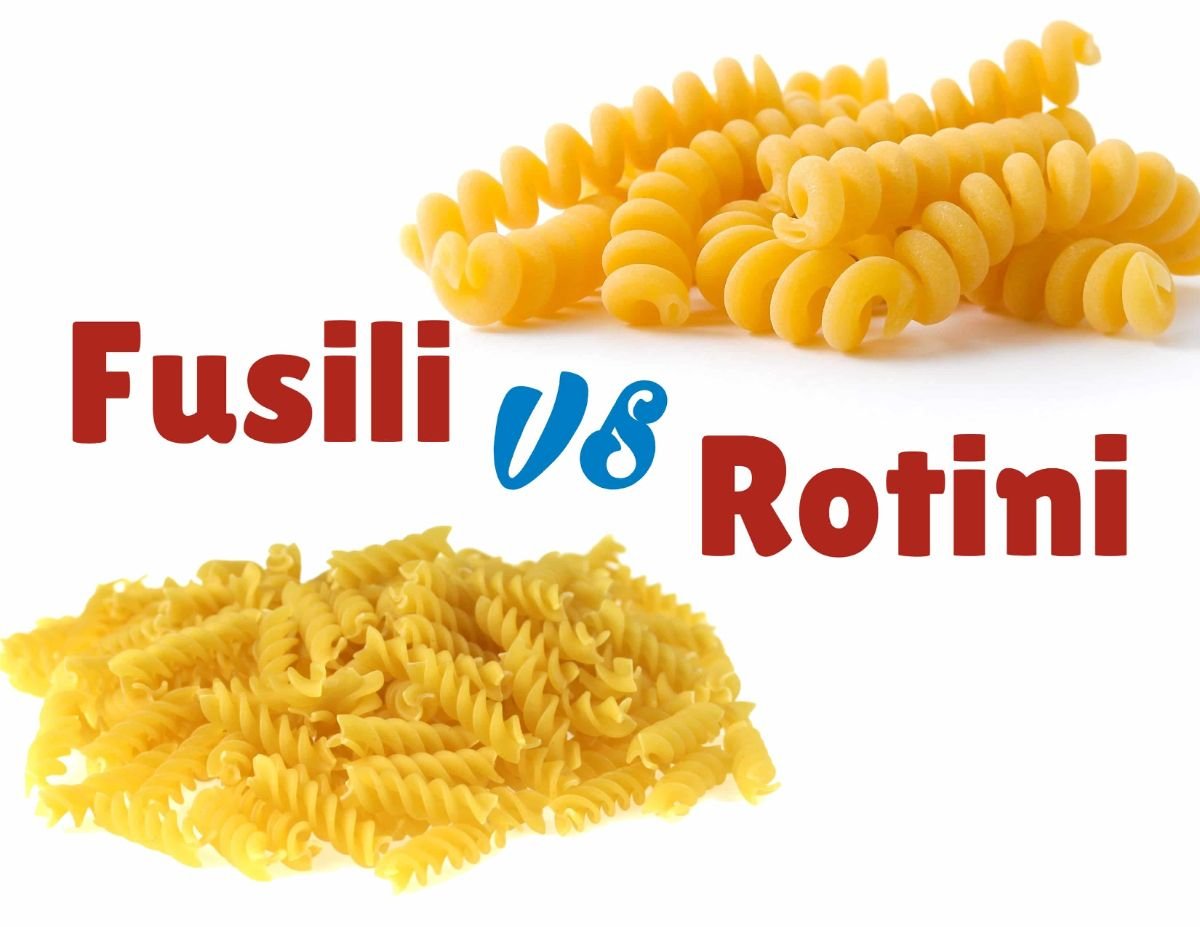
Italian cuisine is perhaps one of the best and wealthiest cuisines globally. We owe so much to it, from pasta to spaghetti to modern pizzas.
There are over 300 varieties of pasta alone. Spaghetti, Rotini, Fusilli, etc., are only some of these. With so many types of pasta around, some confusion is natural – particularly when it comes to pasta varieties that are more similar than others. Facility and rotini are two such items. The chances are readers may have been using their names interchangeably or may have been using only one of the titles.
Fusilli and rotini are both twisted-shaped pasta types. So then, the question naturally arises – what is the difference between Fusilli and Rotini? one may check their pictures online and will come across what are mostly similar pictures. Often even marketers market the same thing under these two different labels, which further adds to the confusion of end-user.
And they do look the same and might even taste the same at times. So what is the distinction, and why does it even matter?
To answer the first part of that question, let us look at some differences.
For the second part of the question, the distinction is not essential for cooking in everyday life. Still, when it comes to precision cooking, when one is trying to get the exact aesthetic (both taste and look) for a particular dish, there is an apparent distinction between the two. Moreover, you can also check out our article on the differences between Zucchini and Cucumber in detail here!
Some other frequently asked questions relating to the subject include:
Q1: Can I change them interchangeably?
A1: Yes, One can use Fusili and Routine interchangeably for the most part. As long as they are made of the same material, they should taste the same. The only distinction is when one wishes oner pasta to hold sauce or other ingredients well where Routine may be better.
Q2: Which is better – Routine or Fusilli?
A2: For most occasions, both are similarly good. However, there may be some use cases where Routine surpasses Fusili and vice versa. So there is no one answer to which of two is better.
Q3: Are there any health risks involved?
A3: If the reader is allergic to the material used for making Fusilli or Rotini, it is highly advised to avoid using them. Also, make sure that the pasta has not run out of expiry date before buying and cooking them.
Q4: How can I tell them apart?
A4: Rotini will be shorter and with a lesser gap than Fossil. It will be screw-like in shape while Fosili is spiraled in form.
Q5: Are there any substitutes for these two?
A5: While Fusili and Routine are near substitutes, there are some other close substitutes for these two. These substitutes include:
Q6: How do one store pasta?
A6: When storing any dry and uncooked pasta, one must keep it in cool and dry places, and it will be good for eating for quite a while (sometimes up to a year). Airtight containers are recommended to preserve freshness. On the other hand, frozen pastas must be stored in refrigerators and have a brief life span.
For cooked pasta, it is essential first to coat it with olive oil or some butter and then let it dry a little before shutting it in an airtight box. One should take steps to preserve any uncooked pasta immediately, and once it is done, it will be safe for three to four days. If one wishes to save cooked pasta any longer, it is wiser to freeze it instead, as that can elongate the life of pasta by up to three months.
The distinction between Rousili and Fusilli is not something many people would like to care about. However, for those who want to approach their cooking with puritanism and the perfection of an artist at their work, these fine distinctions are of incredible difference. In wrapping up this discussion, it is hoped that the reader will find this helpful information.